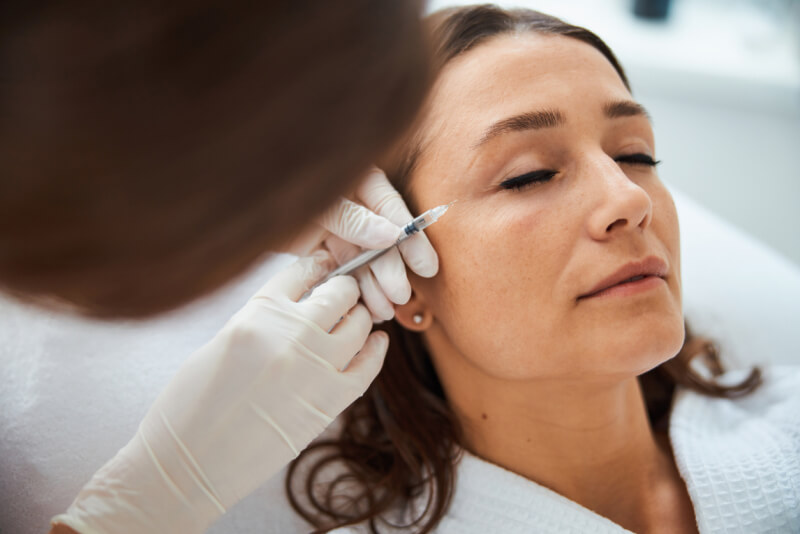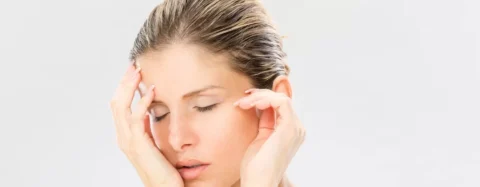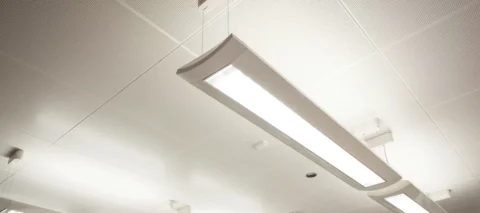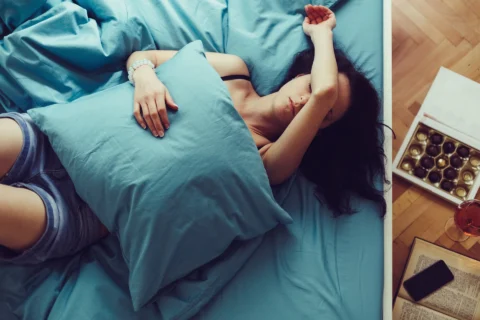A lot of inevitable things come with age, and unfortunately, crow’s feet are one of them. Crow’s feet are the wrinkles you see in the corner of your eyes, and while no one really likes any kind of wrinkle, crows feet are the kind of wrinkle that looks more pronounced on the skin — making us hate them even more. Some of the causes of crow’s feet are aging and UV exposure, but it can actually occur at any age. But don’t fret — a cosmetic treatment like Botox has been around to help reduce facial wrinkles. A Botox treatment has helped many patients deal with fine lines and dynamic wrinkles over the years.
So can Botox around eyes treat crow’s feet? Just like any other wrinkles on your face, crow’s feet can definitely be treated by Botox. Botox is a better option for crow’s feet treatment compared to cosmetic surgery because it’s quick and non-invasive.
What Are Crow’s Feet and How Do They Occur?
We know that crow’s feet are the wrinkles in the corners of your eyes and that aging and UV exposure are some of the main causes, but there are many other things about crow’s feet that we need to know for us to better understand what we’re dealing with.
Crow’s feet are also called laugh lines and character lines. When it comes to more technical names, they’re commonly called Duchenne markers, orbicularis oculi contractions, and lateral canthal lines.
The skin on our face normally stretches due to elasticity. This means that it goes back to its original form when pulled or compressed. However, due to aging, our skin loses this elasticity. This causes wrinkles to form as our bodies’ production of collagen and elastin lessens as we get older. More than this, muscle contractions caused by squinting or frowning can make our skin fold and furrow, leading to facial lines such as crow’s feet lines.
UV exposure and aging may be the main causes of crow’s feet, but it can occur at any age — even in your mid-twenties. These annoying lines near the eye area can appear earlier in life even though other wrinkles show up later on because of a thin skin layer and lack of oil glands surrounding your eyes.
Crow’s feet may be a sign that you’ve had good laughs and smiles in your lifetime, but they can, unfortunately, affect your self-confidence — especially when you only see these eye wrinkles stretching from the eye area to your temples. But don’t worry — Botox can be used to fight the wrinkles in your face, including glabella lines/glabellar lines, marionette lines, forehead wrinkles, and frown lines.
How Does Botox for Crow’s Feet Work?
Botox is a quick treatment that works beneath the skin’s surface. It works by temporarily reducing underlying muscle activity that causes issues like crow’s feet, forehead line, and smile lines. When Botox injection is used for crow’s feet, the injections relax the muscles surrounding your eyes, so your skin smooths out.
The Botox injectables are made from botulinum toxin type A. Botulinum toxin type A is produced by the same bacterium responsible for botulism. When administered in very small doses, it’s a safe and effective treatment for facial wrinkles.
The key difference between Botox for crow’s feet and Botox for deeper lines in other areas of your face is the number of units needed for each area. While each procedure is customized to each patient, the smaller the treatment area, the fewer units are needed.
A Botox cosmetic procedure is actually pretty fast and straightforward, so don’t worry about it. Before your treatment, you’ll have a consultation to make sure that you’re a proper candidate for Botox for crow’s feet. You’ll also be asked about which areas you’d like to target. In the case of crow’s feet, the skin around the corner of your eyes will be the injection site. You have the option to treat a single area or more than one area depending on the depth of your wrinkles and the condition of your skin.
When it’s time for the treatment, a very fine needle will be used to inject a carefully controlled stream of Botox. The practitioner will repeat the procedure until the treatment has covered all the areas you wish to address.
After the treatment, you may feel that your skin is a bit flushed, and the area surrounding the entry point is a bit swollen. If your skin is inflamed, apply ice to the area. Just be sure that it’s wrapped in cloth so there won’t be any direct contact with the skin. Side effects should be minor and should subside within 2 days.
If you’re taking medication or herbal supplements, don’t forget to inform your doctor. They may recommend that you temporarily stop taking them before your procedure to reduce the chances of side effects.
What Are the Benefits of Getting Botox for Crow’s Feet?
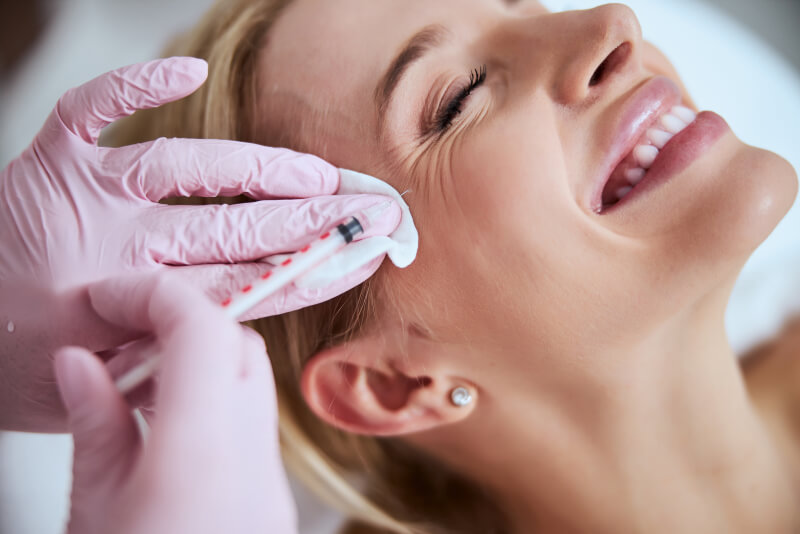
Crow’s feet are usually the first visible sign of aging. They tend to develop before other wrinkles on the face due to the delicacy of the skin around the eyes as well as how often we use the muscles in this area. When we do facial expressions, our facial muscles, including our eyes, move.
Luckily, a cosmetic injection such as Botox provides numerous benefits for those who want to deal with their facial wrinkles:
- It’s a non-surgical procedure: A lot of potential patients are hesitant about getting a surgical procedure because of the risks of invasive treatments. Botox, however, is a preferable alternative as it provides results without the risks that surgery provides.
- It’s a simple process: A Botox treatment usually takes only 15 to 30 minutes. An ultra-fine needle will be used to inject a tiny amount of Botox into the areas of the skin that you want to address, and after that, you won’t have to worry about needing to take a day off.
- Botox provides targeted treatment: Botox treatments can target specific areas of the skin that are susceptible to wrinkles and lines. For crow’s feet, you can simply address that actual area with Botox treatment — and it won’t be a problem even if the rest of your face is youthful and smooth.
- Botox results won’t last forever: If you’re worried about committing to a treatment that may not match the results you want, don’t worry: Botox only has temporary results. Many people are worried about getting a cosmetic treatment because the results may not be what they wanted, but with Botox, the results only last for 4 to 6 months. So if for whatever reason, you’re not satisfied with how it turned out, you’re comforted by the fact that the effects will soon fade.
- Botox gives natural-looking results: Botox results will definitely not make you look or feel fake. A Botox treatment can give you natural-looking results that you’ll feel confident and comfortable in.
How Much Does It Cost?
When it comes to Botox around eyes or crow’s feet, remember to prepare for long-term costs. Most healthcare providers will charge you on the number of Botox units and not the actual visit.
An expert Botox injector would charge Botox by the area and by the unit. The price per Botox unit varies from one location to another, so the price ranges from $9 to $20. The number of units needed to reduce and prevent fine lines and wrinkles around the eyes is around 10 units, and eye each is likely to receive 5 units.
Therefore, when you calculate the total cost of an injection around your eyes, multiply the number of units and the total per unit (e.g., Multiply 10 units by 20 dollars = 200 dollars). Remember that the cost of Botox for the eye area always varies from one location to another depending on the location, the area to be treated, the person performing the treatment, and the reputation of the doctors and clinics.
Another thing to remember is that insurance doesn’t cover Botox for crow’s feet because it’s an elective cosmetic treatment, not a medical treatment.
What Should I Know About Recovery and Side Effects?
The length of recovery for Botox is short as compared to other types of cosmetic procedures. You’re also able to go home right after the treatment. You can expect to see the difference after around 3 days. After 2 weeks, you should already see the full effects, and you should see that the wrinkles are significantly less prominent when you smile. Just remember that Botox isn’t a permanent solution, and the results will last around 4 to 6 months. When the effects start to fade, you may undergo repeat treatment.
You don’t have to worry about its safety as well. Botox has been used for over a century, and in the last decade, it has become widely popular. When Botox is administered by trained and experienced professionals, there’s an extremely low risk of complications.
However, while Botox is extremely safe, side effects are still possible. When you leave your healthcare provider’s office, you may notice some redness and swelling around your eyes, as well as small bruises. These side effects may occur in the areas where your provider injected the Botox in the muscles around your eyes, but there shouldn’t be any widespread inflammation.
Other side effects could also be:
- Droopy eyelids or eyelid
- Crooked eyebrows
- Headaches
- Dryness around the injection site
- Excessive tearing in the eyes
If you experience any of the following rare side effects, seek medical help immediately:
- Difficulty breathing
- Loss of speech or vision
- Difficulty swallowing food and drinks
- Bladder control problems
- Muscle weakness (starting in the face and spreads to the body)
What Are Other Ways to Treat Crow’s Feet?

Aside from Botox, other treatments can also be used to treat crow’s feet:
1. Topical Creams
Prescription and over-the-counter topical creams or eye cream can help beat fine lines and wrinkles. Tretinoin (Retin-A) is commonly used to fight the signs of aging because it promotes the production of new skin. Another reason why we love eye cream is that it helps reduce eye bags and brighten dark circles.
2. Chemical Peel
A chemical peel is done through a chemical solution on the face, thus removing the outer layer of the skin and revealing new and smoother skin. The three different types of chemical peels are superficial peels, medium-depth peels, and deep peels.
3. Dermal Filler
These are injected directly into the crow’s feet with a small needle. Take note that the various fillers have slightly different components, so be sure to discuss them with your healthcare provider.
4. Laser Treatment
Ablative laser resurfacing works by removing the upper layers of skin and revealing newer skin. This procedure works well for crow’s feet because it heats up several layers of skin, thus promoting collagen production.
5. Hyaluronic Acid
Hyaluronic acid is most useful for treating crow’s feet when it’s used together with vitamin C or another absorbable serum that can help stimulate collagen growth in the skin tissue.
Getting Botox Around the Eyes With Ethos Spa
When you want to get rid of crow’s feet with Botox, remember that it’s always important to consult and get your treatment from a trusted and experienced provider such as the Ethos Aesthetics + Wellness.
Ethos Aesthetics + Wellness specializes in state-of-the-art aesthetic treatments for clients in New Jersey and other nearby areas. We guarantee to offer the safest and most effective treatments and solutions to ensure beautiful and long-lasting results.
Visit our website or call us at 908-365-0285 to book an appointment.
Learn more: Can I Get Botox Between My Eyes?

